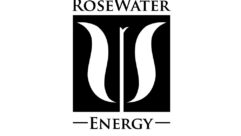All about electricity
Feb 20, 1997 12:00 PM,
Ted UzzleUzzle is editor of S&VC.
Charles W. Dale, Ed.D., Basic Electricity & DC Circuits, Prompt Publications (an imprint of Howard W. Sams), 1995, x + 901 pp., paper, $34.95. Cletus J. Kaiser, The Resistor Handbook, CJ Publishing, 1994, viii + 98 pp., paper, $15.95. Cletus J.Kaiser, The Capacitor Handbook, second edition, CJ Publishing, 1995, vi + 134 pp., paper, $15.95. Cletus J. Kaiser, The Inductor Handbook, CJ Publishing, 1996, vi + 164 pp., paper, $15.95.
Ohm’s law, Kirchhoff’s law, time constants, superposition, tantalum versus mica capacitors, temperature and humidity effects on composition resistors…it’s intimidating stuff for those of us who spent blissful years at a university studying something, anything, other than electrical engineering. Now here we are: a consultant, a contractor, a designer, an installer; we’re expected to know that stuff. How much longer can we go on talking ourselves around it?
These books are for the rank beginner, for the spotty self-taught with holes in their understanding and for the trained-but-rusty who want to drink deep from the rudiments of electrical engineering. They assume no previous knowledge of electrics. By the end, they rise to a surprising, respectable level of understanding. In different ways, they are excellent career steps for those who want to study electrical engineering on their own.
Basic Electricity & DC Circuits by Charles W. Dale is bigger and heavier than a brick. It’s divided into 14 chapters, called lessons here, ranging from the cliché atom with the electrons orbiting around it (did you ever see a book on this subject without that exact same illustration?), through multiresistor circuit analysis, to behaviors of capacitors and inductors in DC circuits.
Each lesson begins with a list of objectives: At the end of this lesson, readers should be able to do the following things. Mind you, not know the following things, but be able to do the following things. That’s an important distinction. This book doesn’t settle for imparting knowledge; its aspiration is to teach readers how to do things.
Then comes the chapter text, and this is organized in a new and innovative way. The text proper, the blocks of words, are in the left column only. The right column is devoted to figures, tables, formulas and such. Sometimes the left column is full and the right column empty; sometimes the right column is full and the left column has only isolated bits of text. Your reviewer has a theory: the right column reproduces overhead transparencies used in actual, live training, while the left column contains the spoken explanations accompanying them. This is an outstanding way to publish lecture notes. During the lecture, the attendee follows along in the right column; after the lecture, the reader recaptures the spoken explanations by reading the left column. It also works superbly well as a book format.
Sometimes the text and the figures reverse themselves, with the figures at the left and the text at the right. These are further examples and specialized material that might not appeal to all readers. Those who want it straight, without grace notes, can plow along the text at the left and skip over parts where figures appear at the left. The reader who wants it all can reverse and follow the text from left to right and back to left. The reader who isn’t sure can stay at the left and review the figures appearing there, deciding on the fly if they seem of interest.
The text portion of each lesson is followed by worked-through examples. These present realistic problems on the lesson subjects, each one stated and solved at length. Here’s a sample: “One morning you try to start your car, and it won’t crank over. Checking your battery, you find it is good, even applying a jumper cable with a good battery doesn’t help. Describe how you would troubleshoot this situation.” A diagram accompanies this worked-through example, one from under the hood of a “lemon motors” engine compartment with battery, solenoid, starter motor and engine. As the example is worked, the problem is reduced to a circuit diagram, and its pieces are tested.
Each lesson’s worked-through examples are followed by practice problems, with plenty of space to simplify diagrams and calculate. The answers are given at the back of the book, but these answers are terse and without explanation. This is in turn followed by a quiz, for which the answers are not provided. Some parts are multiple choice; some parts require the solving of a circuit.
This is emphatically, triumphantly a learning book, not a reference book. It ends, however, with no fewer than 17 appendices of reference material, ranging from wire-gauge data (useful) to instructions for extracting square roots without a calculator (insanely irrelevant). A glossary and index round out the book, letting the overeager jump right into Thevenin’s theorem.
This book is a trampoline that launches you into electrical engineering with a single bounce. It doesn’t go terribly far into electrical engineering (it’s far from an EE degree), but what it covers is thorough and correct and explained so any practical person can understand. It’s honestly priced for what you get, and if this is what you want you can’t do much better.
Now some criticisms. Some of the figures are just too small, with lines so thin they break and type so small it can’t be read without a magnifying glass. In some cases, these look like direct reproductions of overhead transparencies. Most of the figures are fine, but more of them should have been redrawn for this publication.
Also, the bibliography is disappointing. All the books listed were published between 1960 and 1975, most of them in the late 1960s. They are all derivative, textbooks and popularizations, so they offer no authority or case studies. Almost none of them (perhaps none of them at all) are still in print and available to readers.
The author and editors should have made a greater effort to locate books available to readers who want more depth and find books that permit the reader to advance to higher areas of electrical engineering. Who needs a bibliography of old textbooks covering the same material, out-of-print textbooks that can’t be bought anymore?
Don’t be put off by a nitpicking reviewer. If you wait for the perfect self-teaching book on DC circuit analysis, you’ll never learn it.
Now we turn to three slender paperbacks on resistors, capacitors and inductors, all by Cletus J. Kaiser.
Every book reviewer has two secret ambitions, one selfish and one humble. The selfish ambition is to publish his own book. Your reviewer has had this thrill, several times over. In addition, he oversees 14 books a year in magazine form, enough to satisfy even the most raging egotism.
The humble ambition is to discover an obscure book of outstanding, overwhelming worth and tell the world about something especially good. 45,000 books year are published in the United States, of which less than 6,000 are ever reviewed. Some of them, the latest products of Stephen King and John Grisham, are reviewed again and again and again.
Here are three books, self-published by their author, never to be sold by advertising campaigns nor distributed to bookstores by high-pressure salespersons, of extraordinary quality and use to the sound and video industries. The Resistor Handbook, The Capacitor Handbook and The Inductor Handbook, all by Cletus J. Kaiser, available individually and together as The Passive Trilogy, are introductory books for beginners and reference books for everyone who works with resistors, capacitors and inductors. They are of use to product designers who need quick, accurate reference information about the circuit-level components they use in manufactured products. They are useful to consultants and contractors who use these electrical components in product interconnection and who want a deeper understanding of the innards of products they evaluate and buy.
The Resistor Handbook opens with a chapter on resistor fundamentals. These include power rating, thermal dissipation, duty cycle, reactance of (theoretically) resistive elements and noise. There follow chapters on composition resistors, film resistors, wirewound resistors and nonwire-wound resistors. A section on thermistors, NTC and PTC, concludes the book. A glossary and index are included, as well as a bibliography of today’s sources (1981-1993). Also, the book finishes with both a resistor-selection guide and an appendix of symbols and equations.
Do you understand the frequency effects of composition, film and wirewound resistors? Do you know what high humidity does to universally used composition resistors and how to return them to nominal value? Do you know the special needs of shunts and sensors? It’s all made plain in this book.
The Capacitor Handbook follows the same outline. It begins with fundamentals for all capacitors: the electrode-dialectric-electrode construction, CR filtering, CRC filtering and PI-filtering, and impedance-versus-frequency. Following that is a discussion of ceramic capacitors, plastic-film capacitors, electrolytic capacitors, tantalum capacitors, glass capacitors and mica capacitors. Again, a hugely useful capacitor selection guide is in the book, as is a collection of formulas and symbol definitions, a glossary, bibliography, and index. Again, the bibliography is immaculately authoritative and up-to-date, ranging from 1985 to 1989.
The Inductor Handbook, the most recent of these books, follows the same general form. It begins with a discussion of fundamentals for all inductors, including test methods and the stray resistances and capacitances in all real inductors. A chapter deals with ferrite inductors, both power inductors and low-level types. An quite useful chapter deals with transformers, both signal and power types. Again, the book has a glossary, index and an authoritative bibliography of recently published source material. Moving this book into the most modern applications is an appendix on data-line filtering, the use of inductors in power conditioning for computers and in computer communications.
Although self-published, these books conform to the highest standards of book layout and illustration and are outstanding value for their price. They completely blow away such older titles in your reviewer’s technical library as ABC’s of Capacitors by William F. Mullin, an ancient, out-of-print Sams book from way back in 1971
Everyone who has to deal with resistors, capacitors and inductors will learn something from these three books and find them worthy and economical parts of a technical library. They’re great for in-service training, but don’t loan them out, you’ll never get them back; tell your people to buy their own copies. We can only hope this author turns his spotlight onto other passive components, and we’ll have the advantage of future books on controls (pots and switches), connectors and the like.
For information on Basic Electricity, circle (264) on the Rapid Facts Card. For information on the passive trilogy, circle (263) on the Rapid Facts Card.










